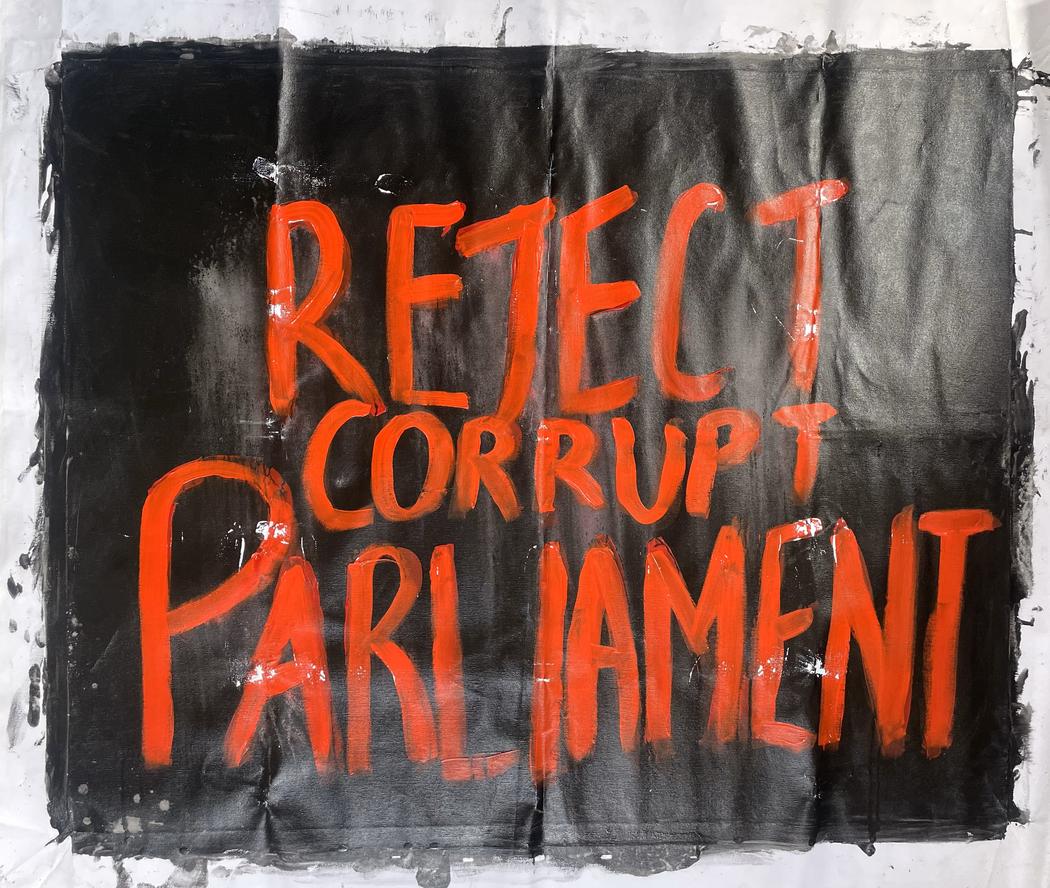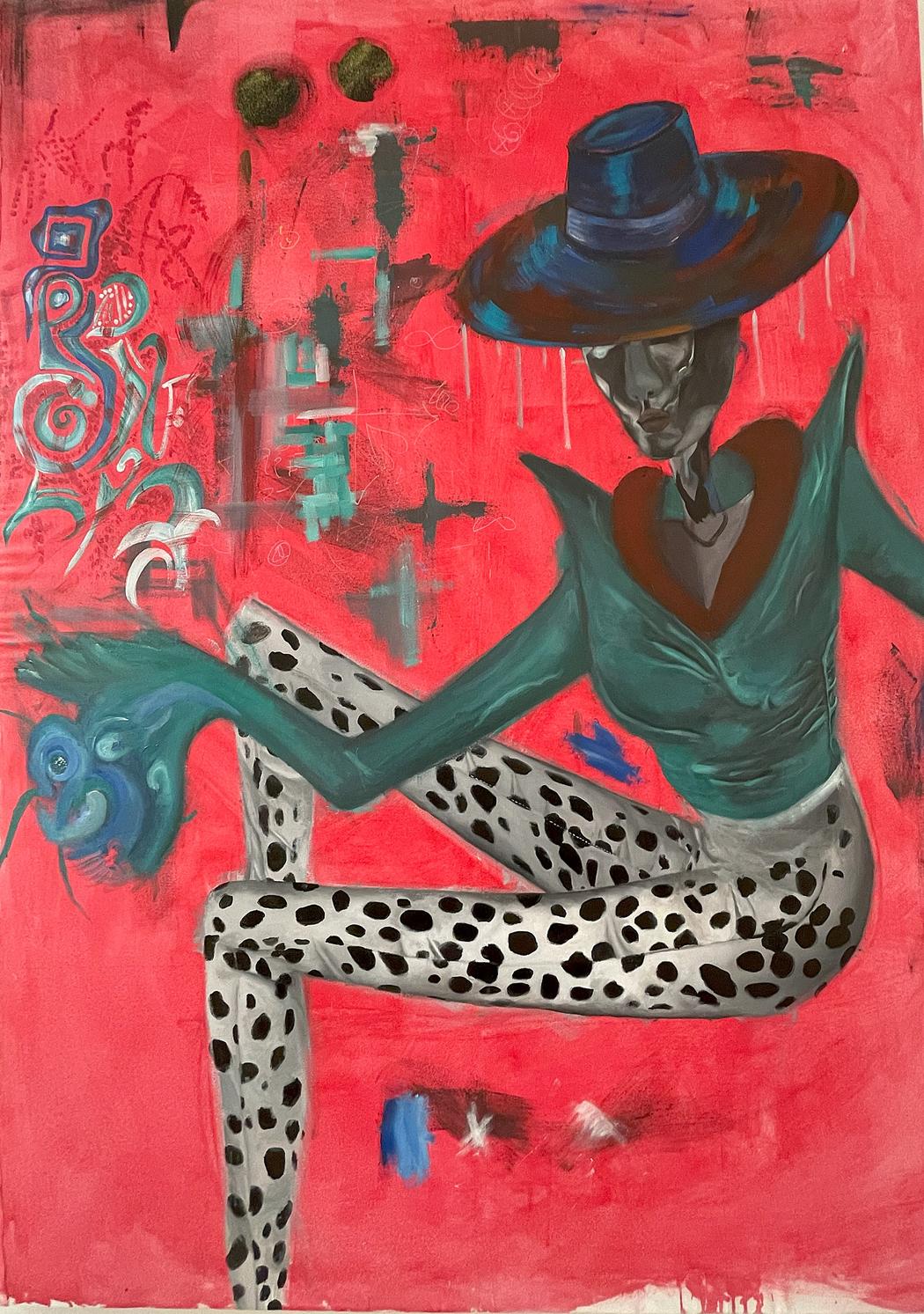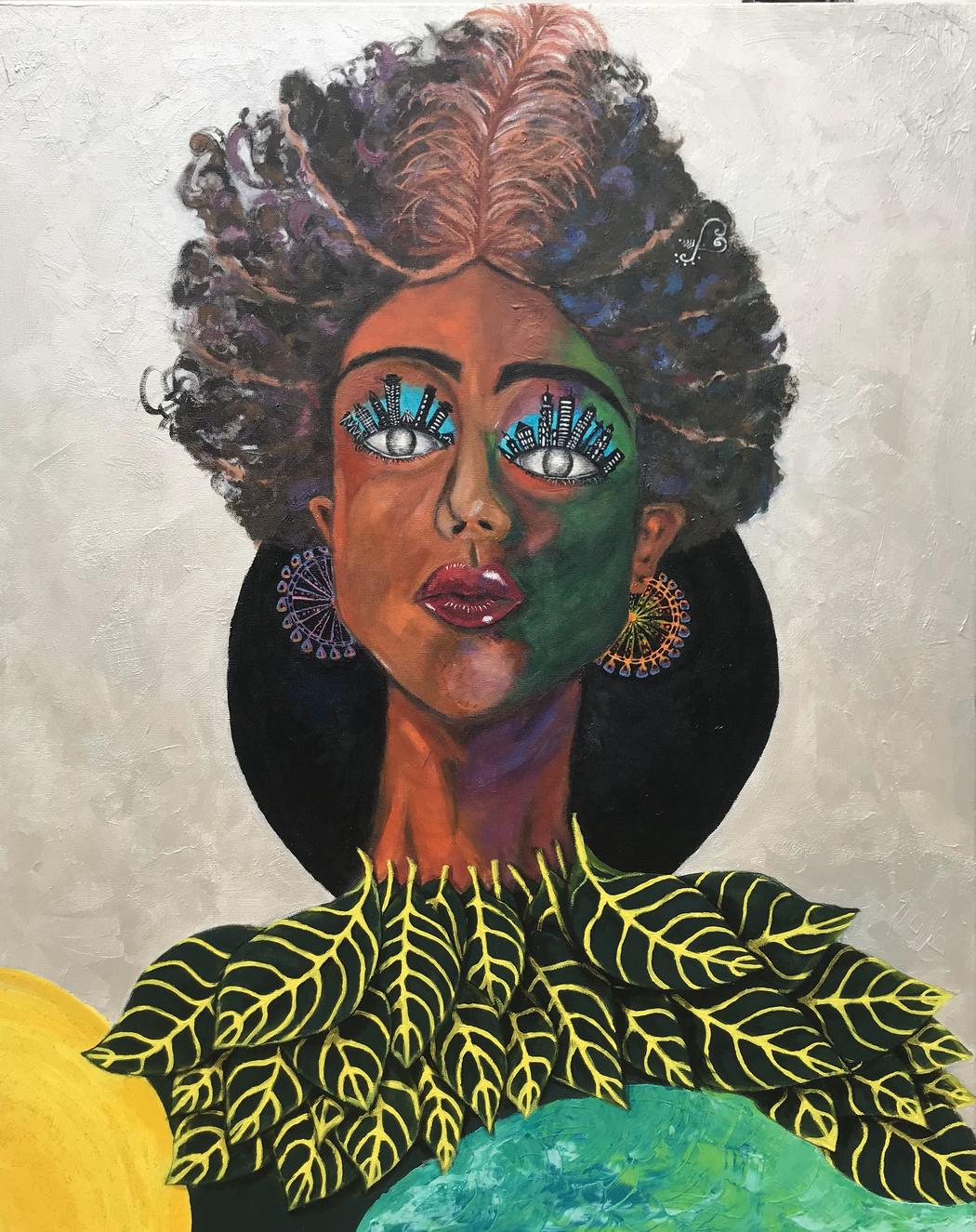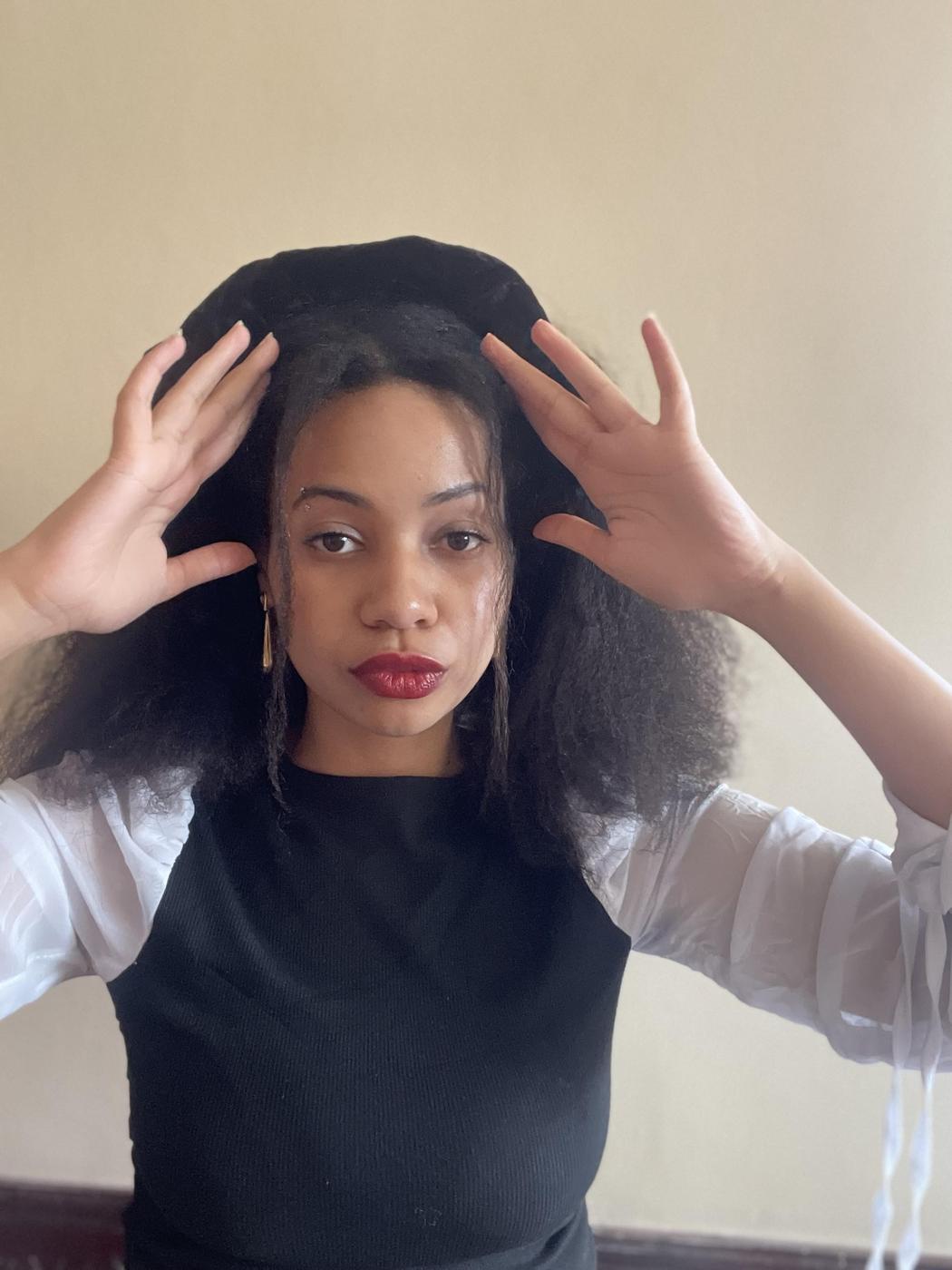Samantha Cherotich Kirui
Your education: Bachelors of Science in Industrial Engineering
Describe your art in three words: Feminine, Free, Fun
Your discipline: My discipline is primarily painting, using acrylics as my main medium. I sometimes incorporate mixed media and found materials. Through my work, I explore themes of identity, womanhood, and faith, often using symbolism to communicate what words can’t always express.
Website | Instagram
Your art speaks powerfully about identity and womanhood. How has your personal experience shaped the themes you explore?
Growing up, I never felt I had the space to fully grow into my womanhood–nor did I know where my identity belonged. So, I chose to shrink. It felt easier to take up less space, to soften myself into silence. The more I did, the quieter my voice became.
Tradition was heavily enforced in my upbringing–traditions shaped by and for the patriarchy. When you’re repeatedly told, in words and in practice, that your value is lesser because you’re not a man, you start to believe it. I did. But even after internalizing that belief and living within its confines, I reached a breaking point. I asked myself: Did I do enough to be accepted into a system that was never built for me?
The answer to that question lives in my art.
She–my work–is feminine because she can be. Not as a sign of weakness, but as a declaration of power. She is bold. She does not dim her light to be palatable. She is the lamp on a table that lights up the room, the beacon on a hill seen from far and wide. The old lie was that there was no more room for her voice. But she stands anyway, strong and sovereign, grounded in unspoken feminine confidence.
You describe your creative process as emotional excavation. Can you walk us through how a piece typically begins for you?
Certainly. When I start a piece, I usually begin with uncertainty, but I always lay a strong foundation. I tone the canvas and draw a cross over it. That part is sacred to me. It’s how I draw strength from my faith in Christ. It reminds me that whatever the outcome, all is well. That grounding allows me to let go.
I don’t like to box myself into one idea too early. The original concept often shifts as I paint, which gives me space to explore and feel more deeply. Sometimes, I feel everything so clearly that the image almost paints itself. Other times, like when I lost a close friend, I felt nothing and everything all at once. That’s when the abstract takes over–when words can’t do the emotion justice. The canvas becomes a gallery to hold what I can’t say out loud.
So, in that way, every piece becomes a kind of emotional excavation: digging through the mess of feeling until something honest comes to the surface.
 Samantha Cherotich Kirui | Reject Finance Bill | 2024
Samantha Cherotich Kirui | Reject Finance Bill | 2024
You often work with found and unconventional materials. How do you choose them, and what do they symbolize for you?
Working with found and unconventional materials started out of necessity. I didn’t always have access to canvas or traditional supplies, but I had what others overlooked: materials full of possibility. What some saw as waste, I saw as raw potential.
One of my favourite pieces was painted on a wooden panel that had long decayed. The artwork underneath was over 50 years old, faded, and worn by time. But instead of discarding it, I chose to work with it, to let its history live on through something new. That felt meaningful to me.
This way of working is something I’ve inherited, it runs in my family, the ability to give new life to what’s been forgotten. Using found materials feels like an act of transformation. It’s about seeing beauty where others might not, and trusting that anything can be made new again.
Your work feels both intimate and political. Do you see your art as a form of activism?
Yes, I do see my art as a form of activism, though not always in the traditional sense. For me, activism doesn’t have to be loud or didactic, it can also be intimate, symbolic, and deeply personal. One of my paintings, Caught Red-Handed, explores society’s hold on women’s body image. It’s a piece that visualizes how external expectations–whether through beauty standards, media, or cultural norms–can shape how women see and treat themselves.
While the work comes from a personal place, it inevitably speaks to broader issues about autonomy, shame, visibility, and control. That’s where the political enters: in choosing to expose and question those systems through my practice. I think there’s power in creating something that doesn’t just reflect the world, but gently pushes back at it. So yes, my art is a form of activism, because it insists on presence, on beauty outside control, and on telling stories that might otherwise remain unspoken.
 Samantha Cherotich Kirui | Beggar | 2024
Samantha Cherotich Kirui | Beggar | 2024
Many of your figures carry surreal or symbolic features, like glowing eyes or floral transformations. What role does symbolism play in your work?
Symbolism plays a huge role in my work. It allows me to communicate meaning visually, without overcrowding the piece with overly literal messages. For example, the painting with the floral transformation was inspired by the verse Isaiah 61:3 … “to bestow on them a crown of beauty instead of ashes.” The hands in that piece are covered in copper foil, symbolizing fire. Not just any fire, but one that can be destructive when held too long. Still, through God’s grace, even the ashes become beauty. Like a phoenix, we rise; reborn, transformed.
Symbolism helps carry that weight. It leaves space for interpretation, while still holding intention. As for the glowing eyes–that one’s simple. I paint the eyes based on my mood. Sometimes soft, sometimes fierce. But always honest.
As a self-taught artist, how have you found your voice outside traditional academic frameworks?
Being self-taught has given me the freedom to explore without limitations. I never had to follow a specific style or method, so I’ve been able to find my own way through experimenting, making mistakes, and figuring things out as I go. I actually studied industrial and mechanical engineering at university, so I’m familiar with academic structure just not in art. From that, I learned how to build systems, how to stay disciplined, and how to problem-solve, and I apply that to how I work creatively.
Finding my voice has been a process of trial and error. Every piece teaches me something new–whether it’s a technical skill, how to be more patient, or how to trust myself more. And over time, that learning builds confidence. The more confident I’ve become, the more clearly my voice shows up in the work.
 Samantha Cherotich Kirui | Nairobi | 2023
Samantha Cherotich Kirui | Nairobi | 2023
You speak about tradition and rebellion coexisting in your work. How do you balance these forces?
I believe that in order to preserve tradition, you sometimes have to rebel against the parts of it that caused harm. It’s a process of unlearning, letting go of what no longer serves you in order to protect what still holds meaning. There’s so much I love about tradition. But if I had followed every rule exactly as my culture expected, I wouldn’t be who I am today.
For me, tradition and rebellion can coexist. Not because I want to reshape tradition, but because I want to carry it forward with clarity–honouring the beauty in it, while refusing to inherit the parts that diminish me.


Leave a Reply
You must be logged in to post a comment.